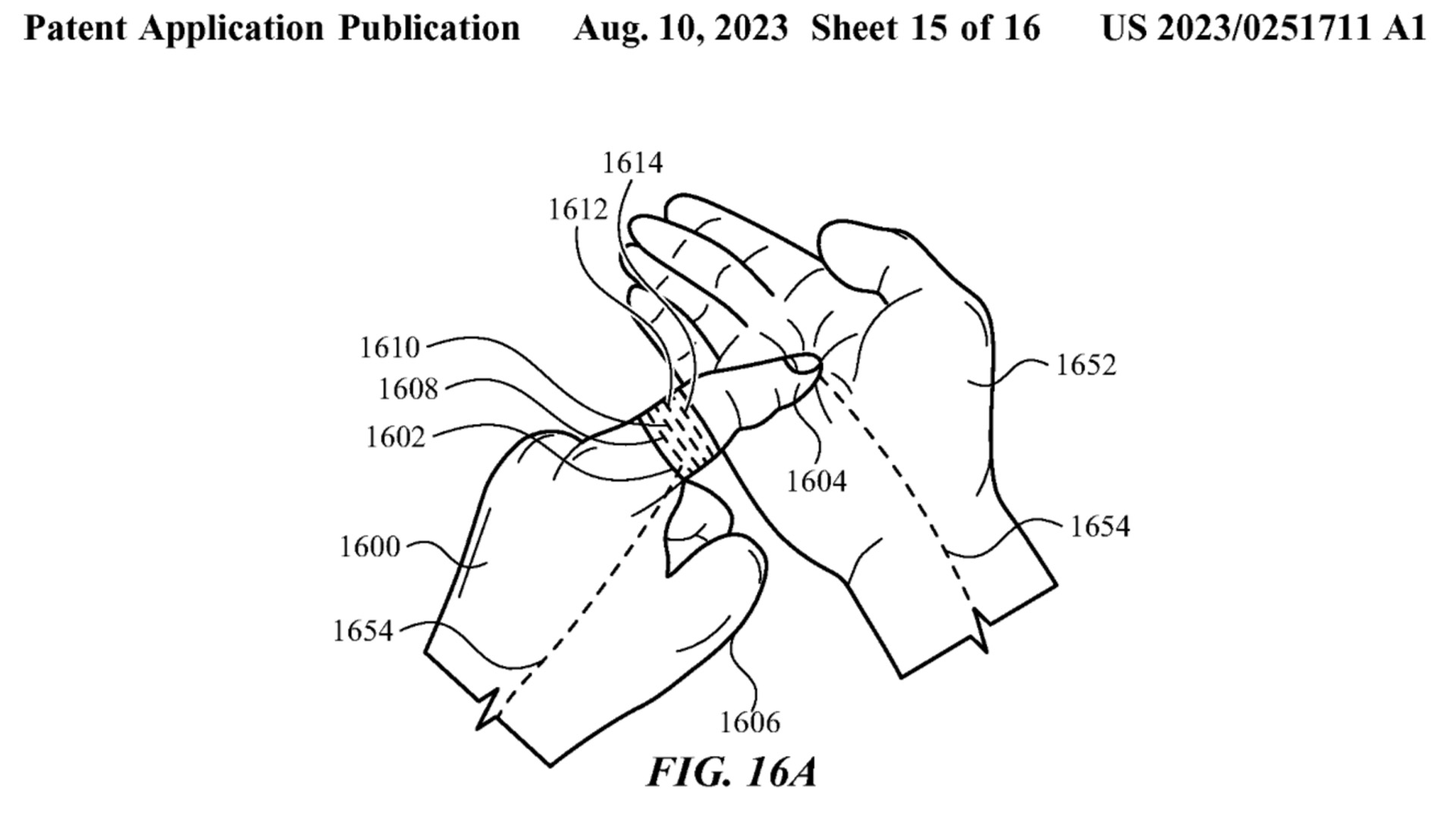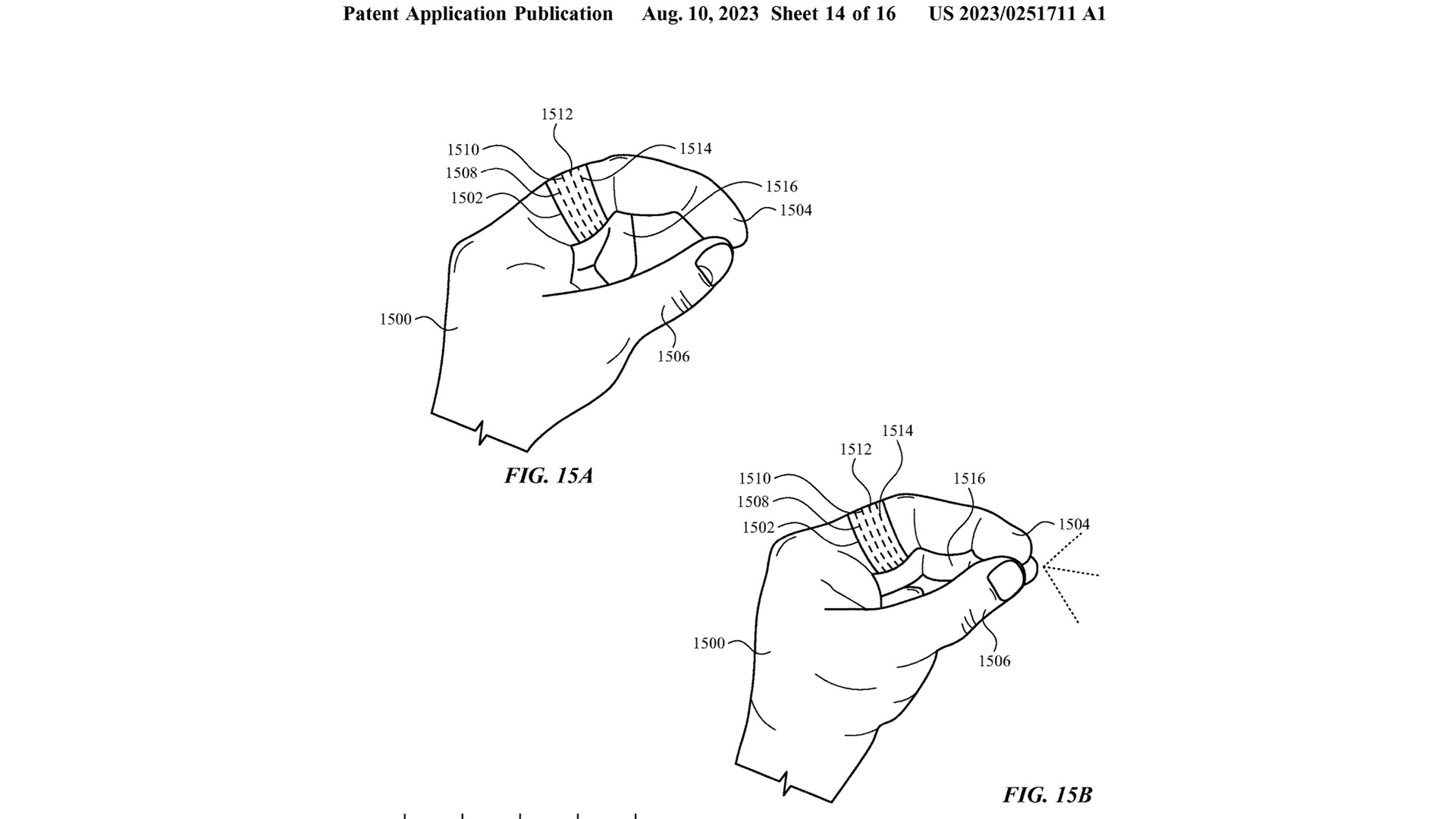Apple files patent for smart ring that can control multiple interfaces and devices
Imagine being able to switch off your TV by waving your hand.

Apple has filed a patent for a single smart ring, or even a combination of multiple smart rings, that can be used to control interfaces and work seamlessly with several other Apple devices, according to Patently Apple.
Several smart rings are on the market at the moment that tracks your sleep and activity levels - take a look at our Oura Gen-3 review for a good example. But this latest smart ring invention from Apple isn’t about tracking, but instead acts as an input.
This means it uses a combination of skin contact and gestures collected from a Digital Signal Processor (DSP) within the device, which can then be read by computer applications, allowing you to perform certain actions to control your tech. The sorts of devices you might be able to control include laptops, tablets, smartphones, smart home devices, and more.
Apple has included diagrams within this patent, which show a hand pinching, waving, pointing, and tapping a palm, all acting as different kinds of inputs. It also details what these inputs might do, such as scrolling, opening a document, and making a call. Everyday actions could be made even more seamless and intuitive by using your hands rather than clicking or swiping through a series of menus.

One ring to rule them all
It makes sense that Apple would be experimenting with this form factor considering a number of tech brands are finally releasing long-promised smart rings, like Oura and Mclear.
This isn’t the first time Apple has filed a patent for a smart ring, or even a device to be worn on your fingers. We’ve covered an early smart ring patent before, that seemed to be geared toward AR/VR interactions. This invention featured special sensors placed to determine the position of smaller devices, like the Apple Pencil.
The focus on devices designed for our hands and fingers makes sense as technology becomes more wearable and more intuitive. We expect that, in the future, the tech that we use to control our devices will be so unobtrusive it’s almost invisible. So what better way to achieve that, than with a device that reads your gestures, like a smart ring?
Master your iPhone in minutes
iMore offers spot-on advice and guidance from our team of experts, with decades of Apple device experience to lean on. Learn more with iMore!
This sort of device also fits with Apple’s plans to venture further into the AR and VR space after the launch of the Apple Vision Pro. Who wants a bulky controller when they’re interacting with virtual spaces?
If virtual environments and interactions are going to successfully replicate real ones, we need devices that are going to accurately sense what our hands are doing in a physical space and translate that into a virtual one seamlessly.

Becca Caddy is a contributor to iMore, as well as a freelance journalist and author. She’s been writing about consumer tech and popular science for more than a decade, covering all kinds of topics, including why robots have eyes and whether we’ll experience the overview effect one day. She’s particularly interested in VR/AR, wearables, digital health, space tech and chatting to experts and academics about the future. She’s contributed to TechRadar, T3, Wired, New Scientist, The Guardian, Inverse and many more. Her first book, Screen Time, came out in January 2021 with Bonnier Books. She loves science-fiction, brutalist architecture, and spending too much time floating through space in virtual reality. Last time she checked, she still holds a Guinness World Record alongside iMore Editor in Chief Gerald Lynch for playing the largest game of Tetris ever made, too.
